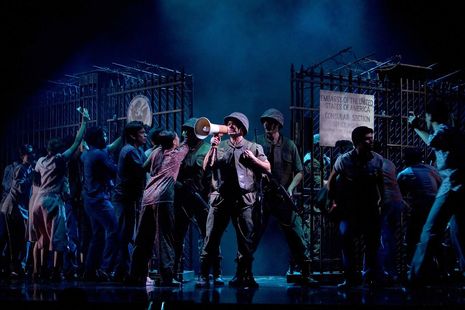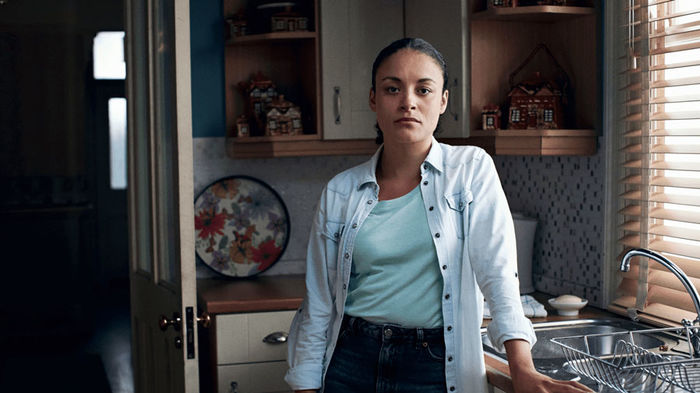Miss Saigon’s violence and sexualisation do not negate its power
Imogen Gander explores what makes Miss Saigon her favourite musical, despite the recent criticism of its problematic storyline and casting.
My favourite musical is one that not many have heard of, and even fewer have seen, despite its position as one of the longest running shows of all time; think Cabaret with more sequins, Les Miserables with more colour, and Phantom of the Opera with even more heart-wrenching emotion.
Miss Saigon, adapted from Puccini’s Madame Butterfly by Claude-Michel Schönberg and Alain Boublil, tells the story of Kim, a bar girl during the Vietnam War who ultimately commits suicide to force Chris, an American GI stationed in Saigon in 1975, to take their son back to America with him. Despite having little in common with Kim’s story, when I first watched Miss Saigon for my 15th birthday, I was captivated by this overwhelming tale of love, chaos and the fight to survive.
Miss Saigon is a visual masterpiece; each of Kim’s fellow bar girls wears a unique lingerie set that highlights their individuality, whilst she dresses in a traditional ao dai –making the contrast between the protagonist and the chorus even starker. The Engineer – owner of the club where Kim meets Chris – wears a red blazer that becomes emblematic of his desire to achieve the luxury he describes in “The American Dream”.
“Think Cabaret with more sequins, Les Miserables with more colour, and Phantom of the Opera with even more heart-wrenching emotion.”
Anyone who has seen Les Miserables can attest to the immense range and talent of Boublil and Schönberg, and I believe that Miss Saigon represents their best work. “The Heat is On in Saigon” opens the show – an explosion of colour and sound that introduces us to the Dreamland club. The audience is then treated to an array of genres, from the beautifully romantic “Sun and Moon”, to the cabaret-style kick-lines of “The American Dream” and the militarism of “Morning of the Dragon.”

Recurrences of the theme that we hear as Chris and Kim first dance together occur throughout the show, carrying us towards the show’s devastating ending. Unlike most musicals, Miss Saigon doesn’t end with a rousing chorus number, but with Chris hunched over Kim’s lifeless body screaming a haunting “No, Kim!” that stays with the audience long after the final bows, much like Eliza’s gasp at the end of Hamilton.
Separate from the score, the lyrics in this show are also a triumph. Clever turns of phrase allow Miss Saigon to be extremely funny at times, despite its serious subject; lines such as “Cocaine, shot-gun, and prayer – the American dream” draw a ripple of laughter from the audience whilst “Christ, I’m an American, how could I fail to do good?” presents Chris as an idealist with a strong moral compass, providing a counterbalance to his brash comrade John.
“Kim’s youth helps explain how scared she would be and why she would latch so quickly onto Chris.”
Chris draws out just one of the problematic elements of the show when he tries to turn down John’s offer to buy him a night with Kim by saying “this little girl – we could be in the sack, and I would take something I can’t give back.” We meet Kim at the same time as the rest of the characters at Dreamland, as she introduces herself with the lines “I’m 17 and I’m new here today” and “I will not cry, I will not think; I’ll do my dance, I’ll make them drink.” It was sobering to think that someone just two years older than I was when I first saw Miss Saigon could end up in such a horrific position. The play’s timeline spans until 1978, making Kim just 20, the age that I am now, when she sacrifices herself to ensure that her son can have the life she dreamed for him. Perhaps this is one of the reasons why I love this show so much – whilst fortunately I am not in the same position as Kim, I am able to compare her emotional capacity to my own and understand how scared she would be and why she would latch so quickly onto Chris.
The show’s plot isn’t the only thing that it has faced criticism for in the past. Initially, many of Miss Saigon’s roles were severely whitewashed – thankfully, for the 2014 revival, roles such as The Engineer were recast with South-East Asian actors. In addition to this, perhaps due to comments about the plot’s fetishisation of Vietnamese women, some of the more graphic lyrics that feature on the original cast recording have since been changed, such as “who’s left to screw who hasn’t gone” being replaced with “who’s left in town who hasn’t gone” in the opening number.
I believe that it is important to acknowledge these uncomfortable aspects of Miss Saigon, but don’t think that the violence and sexualisation that we see in Miss Saigon should be a reason to not appreciate this incredible play, as critical reflection allows the audience to use these moments as a springboard to think about the real horrors that many Vietnamese women lived through. Although Miss Saigon is no longer in the West End, I would thoroughly recommend listening to the soundtrack or purchasing a copy of the 25th anniversary performance that was filmed at the Prince Edward theatre in 2014 – this beautifully edited film allows an audience at home a revealing glimpse of how spectacular this musical is in person.
 Comment / Plastic pubs: the problem with Cambridge alehouses 5 January 2026
Comment / Plastic pubs: the problem with Cambridge alehouses 5 January 2026 News / New movement ‘Cambridge is Chopped’ launched to fight against hate crime7 January 2026
News / New movement ‘Cambridge is Chopped’ launched to fight against hate crime7 January 2026 News / Uni-linked firms rank among Cambridgeshire’s largest7 January 2026
News / Uni-linked firms rank among Cambridgeshire’s largest7 January 2026 News / SU stops offering student discounts8 January 2026
News / SU stops offering student discounts8 January 2026 News / Cambridge businesses concerned infrastructure delays will hurt growth5 January 2026
News / Cambridge businesses concerned infrastructure delays will hurt growth5 January 2026









